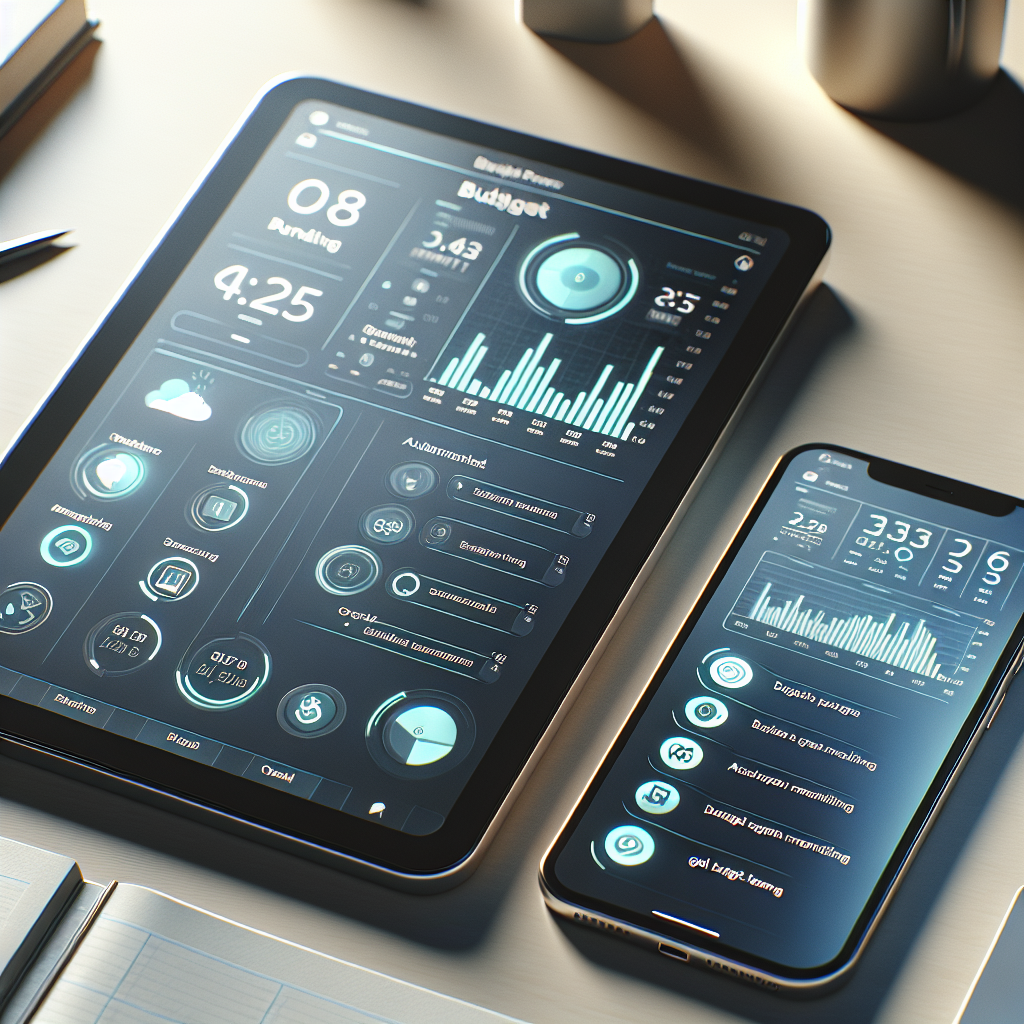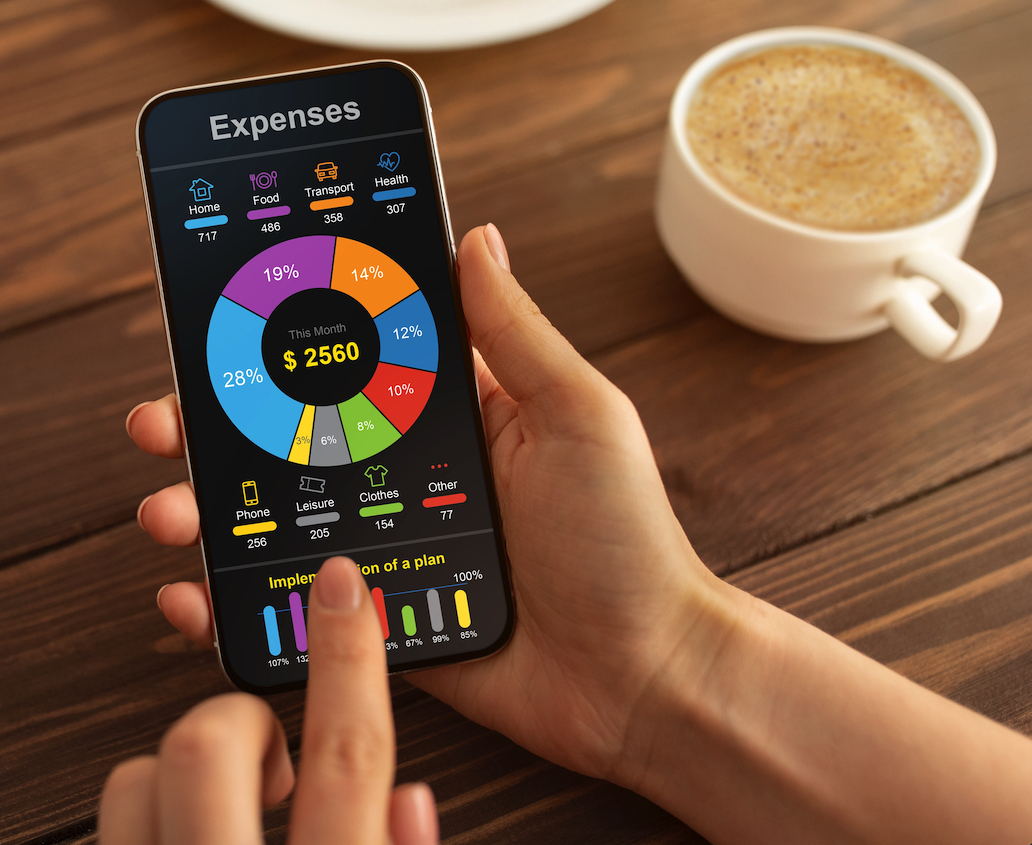Traditional budgeting methods often fall short in providing the agility and precision needed to keep up with modern financial demands. This is where digital budget planners come into play. These innovative tools leverage cutting-edge technology to simplify the budgeting process, making it more efficient and effective.
A digital budget planner is more than just a digital version of a traditional budget sheet. It offers a holistic approach to financial management by integrating features like automated expense tracking, goal setting, and real-time updates. With a digital budget planner, you can easily monitor your spending habits, set savings goals, and make informed financial decisions.
One of the key advantages of using a digital budget planner is its accessibility. You can access your budget from anywhere, at any time, through your smartphone, tablet, or computer. This flexibility ensures that you are always in control of your finances, whether you are at home, at work, or on the go.
Another significant benefit is the ability to personalize your budget planner. Many digital platforms allow you to customize your budget categories, set alerts for overspending, and even receive personalized financial advice. This level of personalization helps you stay on track with your financial goals and makes budgeting a more engaging and rewarding experience.
Ready to take control of your finances and experience effortless savings?Download Vala today and start managing your budget with ease!
Benefits Of Using A Digital Budget Planner

Utilizing a digital budget planner offers numerous benefits that can significantly enhance the way you manage your finances. One of the foremost advantages is real-time tracking of income and expenses. Unlike traditional budgeting methods that require manual updates, digital planners automatically synchronize your financial data, providing you with up-to-date information at all times.
Another key benefit is the automation of expense categorization. Digital budget planners often come equipped with algorithms that intelligently categorize your transactions, saving you time and ensuring accuracy. This feature helps you quickly identify where your money is going and allows you to make more informed financial decisions.
Digital budget planners also excel in goal setting and progress tracking. You can set specific financial goals, such as saving for a vacation or paying off debt, and the planner will help you track your progress. Many platforms offer visual aids like charts and graphs, making it easier to visualize your achievements and stay motivated.
The ability to generate detailed reports is another significant advantage. Digital planners can produce comprehensive reports that provide insights into your spending habits, income patterns, and overall financial health. These reports can be invaluable for identifying areas where you can cut expenses and improve your savings strategy.
Furthermore, digital budget planners offer excellent security and accessibility. Your financial data is securely stored in the cloud, protected by advanced encryption technologies. This ensures that your information is safe from unauthorized access while being easily accessible from any device with an internet connection.
In summary, the benefits of using a digital budget planner extend beyond mere convenience. They provide a powerful and efficient way to take control of your finances, helping you achieve your financial goals with greater ease and precision.
Choosing The Right Budgeting Tools

Choosing the right budgeting tools is crucial for creating an effective digital budget planner. With numerous options available, it’s important to select tools that align with your financial goals and personal preferences. Here are some key factors to consider when making your choice:
1. User-Friendliness: Opt for tools that are intuitive and easy to navigate. An overly complex interface can be discouraging and counterproductive. Look for platforms that offer a seamless user experience, with straightforward features and clear instructions.
2. Integration Capabilities: Ensure that the budgeting tools you choose can integrate with your bank accounts, credit cards, and other financial institutions. This integration allows for automatic updates and real-time tracking of your finances, saving you time and reducing the risk of errors.
3. Customization Options: A good budgeting tool should allow you to customize categories, set personalized financial goals, and tailor the planner to fit your unique needs. This flexibility ensures that the tool adapts to your lifestyle and financial habits, rather than forcing you into a one-size-fits-all approach.
4. Security Features: Financial data security is paramount. Choose tools that offer robust security measures, such as encryption and two-factor authentication, to protect your sensitive information from unauthorized access.
5. Reporting and Analytics: Comprehensive reporting and analytics features are essential for gaining insights into your spending patterns and financial health. Look for tools that provide detailed reports, charts, and graphs to help you make informed decisions and track your progress over time.
6. Customer Support: Reliable customer support can be a lifesaver if you encounter any issues or have questions about using the tool. Check for platforms that offer accessible and responsive support channels, such as live chat, email, or phone support.
By carefully considering these factors, you can select budgeting tools that not only simplify the budgeting process but also empower you to take control of your financial future with confidence.
Setting Up Your Digital Budget Planner
Once you’ve chosen the right budgeting tools, the next step is setting up your digital budget planner. This process involves a few key steps to ensure your planner is tailored to your financial needs and goals.
1. Gather Your Financial Information: Start by collecting all necessary financial documents, including bank statements, credit card bills, and receipts. Having a comprehensive view of your financial situation is essential for accurate budgeting.
2. Create Budget Categories: Organize your expenses into categories such as housing, transportation, groceries, entertainment, and savings. Customizing these categories to fit your lifestyle will make it easier to track and manage your spending.
3. Set Financial Goals: Define your short-term and long-term financial goals. Whether it’s building an emergency fund, saving for a vacation, or paying off debt, having clear objectives will keep you motivated and focused.
4. Input Income and Expenses: Enter your income sources and monthly expenses into the digital budget planner. This will give you a clear picture of your cash flow and help identify areas where you can cut back or reallocate funds.
5. Automate Where Possible: Take advantage of automation features offered by your budgeting tools. Set up automatic bill payments, savings transfers, and expense tracking to streamline the process and reduce manual entry.
6. Monitor and Adjust: Regularly review your budget to ensure you are on track with your goals. Make adjustments as needed based on changes in your financial situation or priorities. Consistent monitoring will help you stay accountable and make informed decisions.
Setting up your digital budget planner effectively is a crucial step toward achieving your financial goals. By following these steps, you’ll create a personalized system that simplifies budgeting and empowers you to take control of your financial future.
Tips For Effective Budget Tracking

Now that your digital budget planner is set up, it’s time to focus on tracking your budget effectively. Here are some tips to help you stay on top of your finances and ensure your budget works for you:
1. Regularly Update Your Entries: Keep your budget planner up-to-date by recording all transactions as they occur. This habit will provide an accurate picture of your financial status and prevent any surprises at the end of the month.
2. Review Your Budget Weekly: Set aside time each week to review your budget. This practice allows you to make timely adjustments and stay aligned with your financial goals. Weekly reviews help you catch any discrepancies early and make necessary corrections.
3. Use Alerts and Notifications: Many digital budgeting tools offer alerts and notifications for due dates, low balances, and unusual spending patterns. Utilize these features to stay informed and avoid missed payments or overspending.
4. Analyze Spending Trends: Periodically analyze your spending patterns to identify areas where you can cut back. Look for trends in discretionary spending and find ways to reduce unnecessary expenses. This analysis will help you allocate more funds toward savings or debt repayment.
5. Set Reminders for Financial Goals: Remind yourself of your financial goals by setting milestones and tracking your progress. Visual reminders can keep you motivated and focused on achieving your objectives.
6. Reconcile Bank Statements: Regularly compare your budget entries with your bank statements to ensure accuracy. Reconciliation helps identify any errors or unauthorized transactions, maintaining the integrity of your budget.
7. Adjust for Life Changes: Be prepared to adjust your budget for significant life changes, such as a new job, relocation, or major purchases. Flexibility is key to maintaining a realistic and effective budget.
By following these tips for effective budget tracking, you can gain better control over your finances and make informed decisions. Consistent tracking and analysis will empower you to optimize your spending and achieve your financial goals more efficiently.
Maintaining And Updating Your Budget

Maintaining and updating your budget is crucial for long-term financial success. A digital budget planner is only effective if it accurately reflects your current financial situation. Here are some strategies to keep your budget current and relevant:
1. Schedule Monthly Reviews: Dedicate time at the end of each month to review your budget. Assess your income, expenses, and savings to ensure they align with your financial goals. Monthly reviews help you identify any deviations and make necessary adjustments for the upcoming month.
2. Adjust for Income Changes: If you experience changes in your income, such as a raise, new job, or side hustle, update your budget accordingly. Reflecting these changes will give you a clear understanding of your new financial capacity and help you allocate funds more effectively.
3. Reevaluate Your Financial Goals: Periodically reassess your financial goals to ensure they remain relevant. Life circumstances and priorities can change, so it’s important to adjust your goals and budget to stay on track.
4. Track Irregular Expenses: Some expenses are not monthly but can significantly impact your budget, such as annual subscriptions, insurance premiums, or holiday spending. Plan for these irregular expenses by setting aside funds each month to cover them when they occur.
5. Use Budgeting Apps and Tools: Leverage the power of technology to maintain and update your budget effortlessly. Budgeting apps and tools can automatically categorize your transactions and provide insights into your spending habits, making it easier to stay on top of your finances.
6. Stay Flexible: Life is unpredictable, and your budget should be flexible enough to accommodate unexpected expenses or changes in financial priorities. Being adaptable will help you maintain financial stability without feeling restricted.
By consistently maintaining and updating your budget, you can ensure that your financial plan remains accurate and effective. This proactive approach will help you stay aligned with your financial goals and make informed decisions about your money.
Ready to take control of your finances and experience effortless savings? Download Vala today and start managing your budget with ease! Visit Vala to get started.







